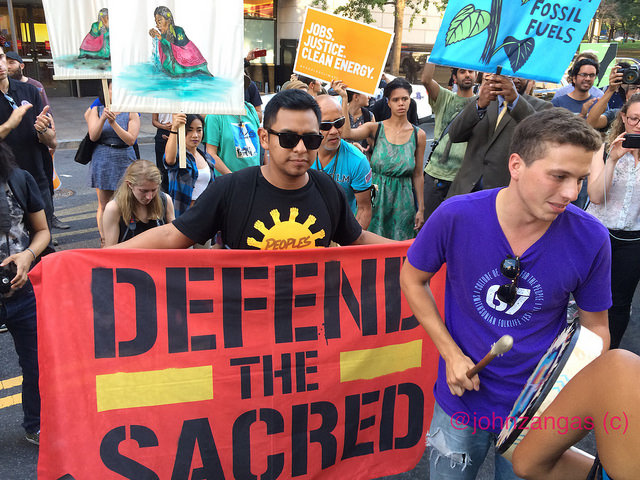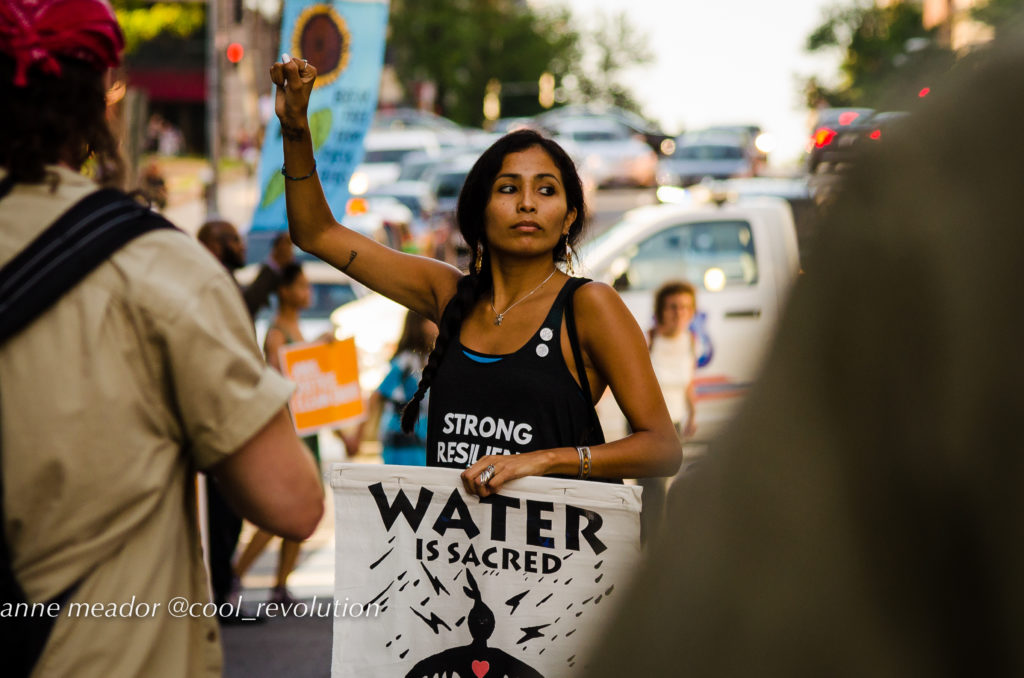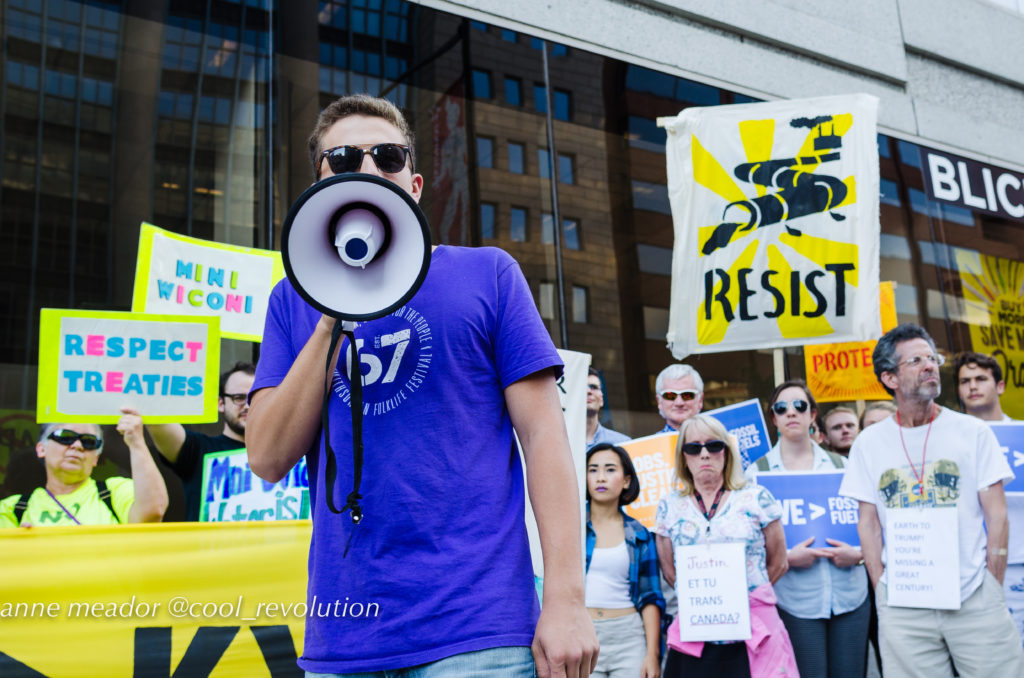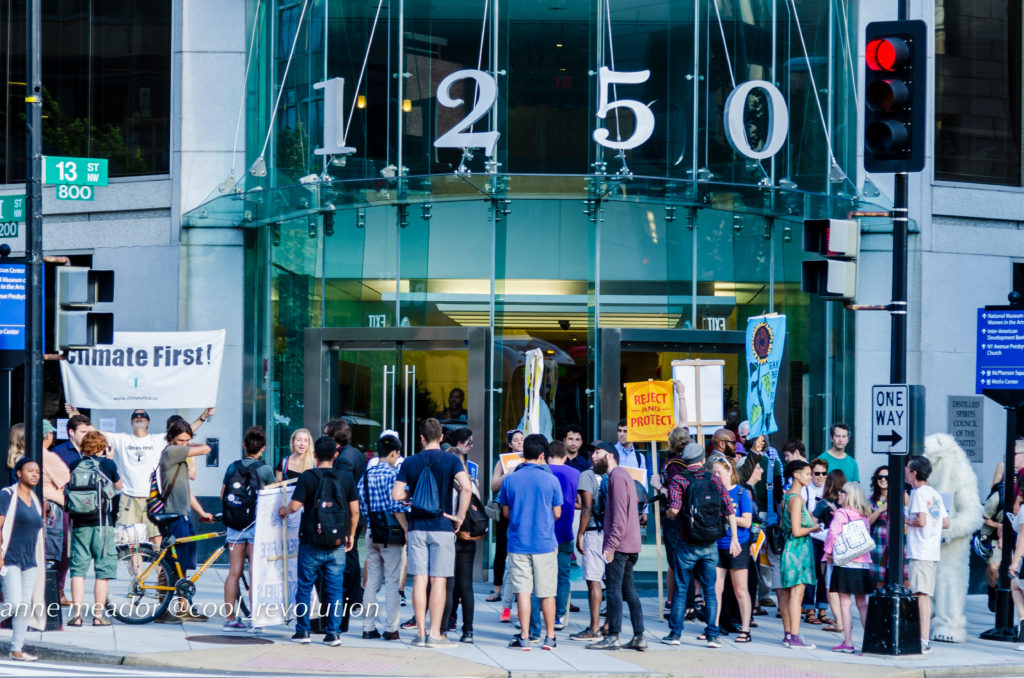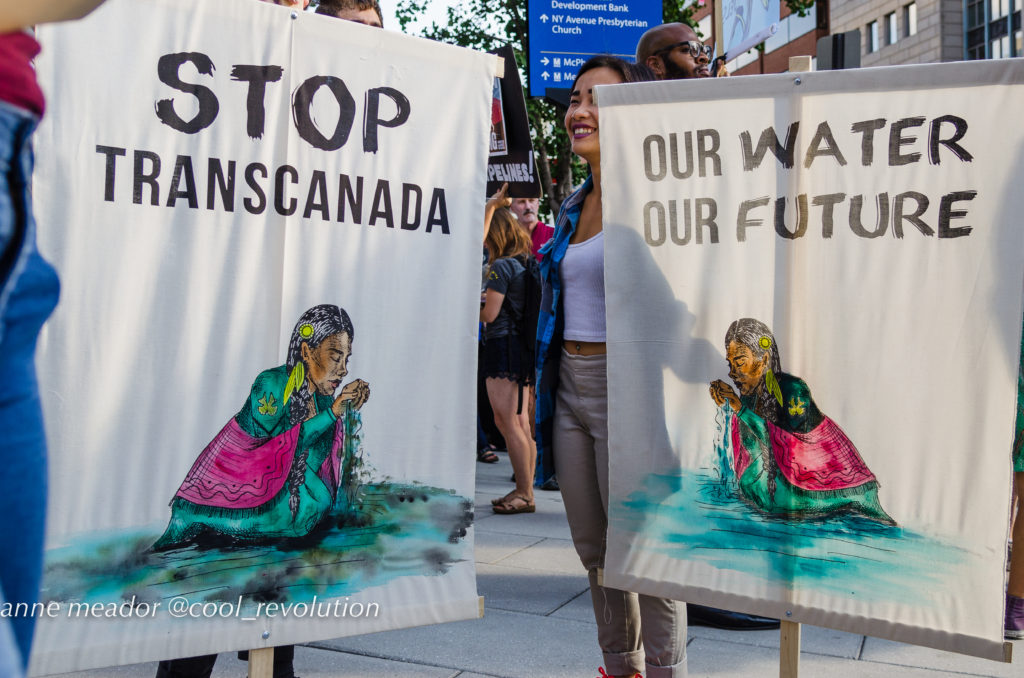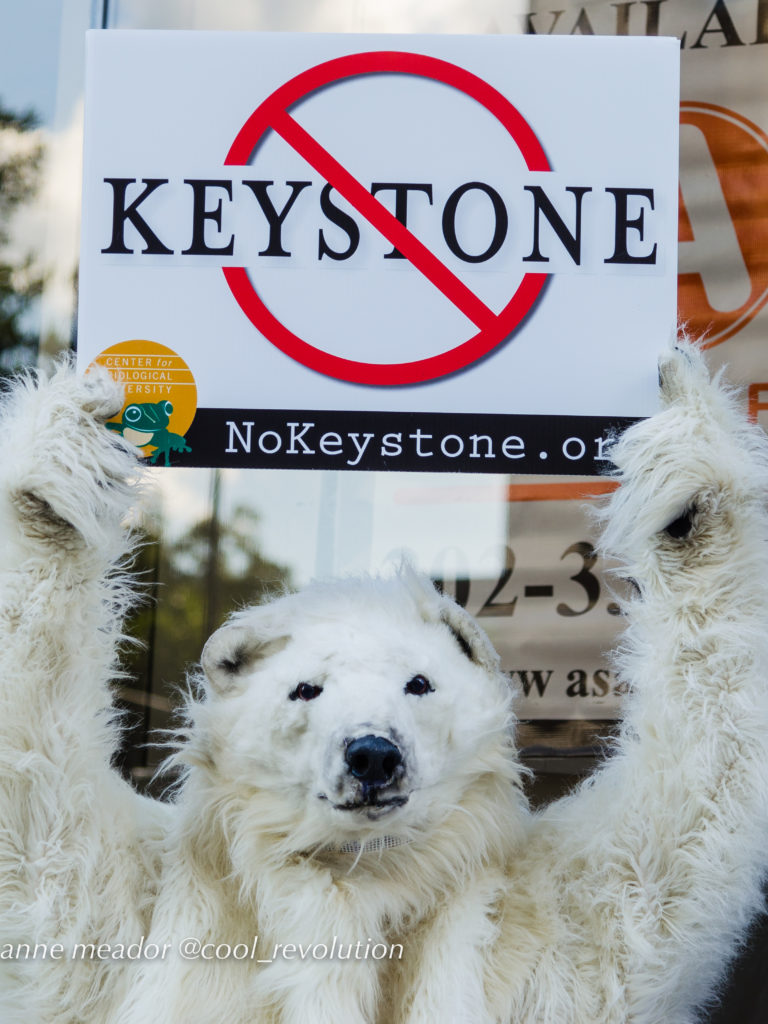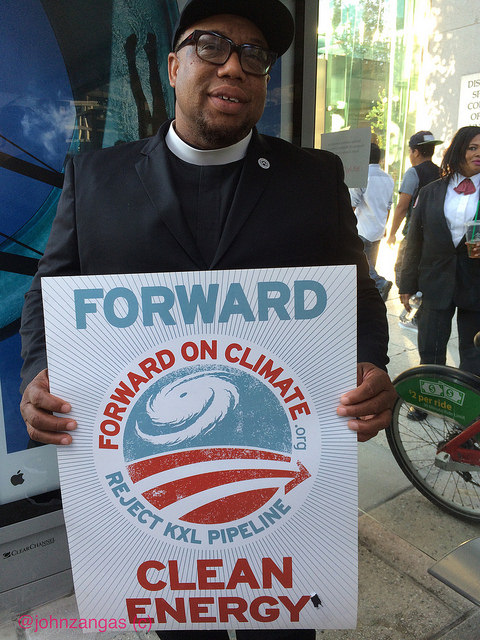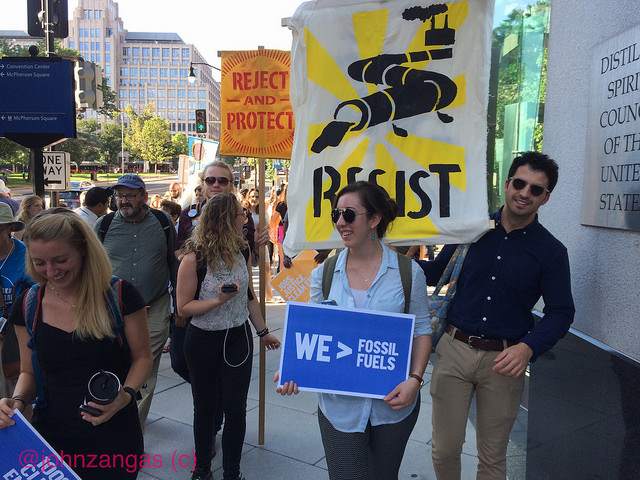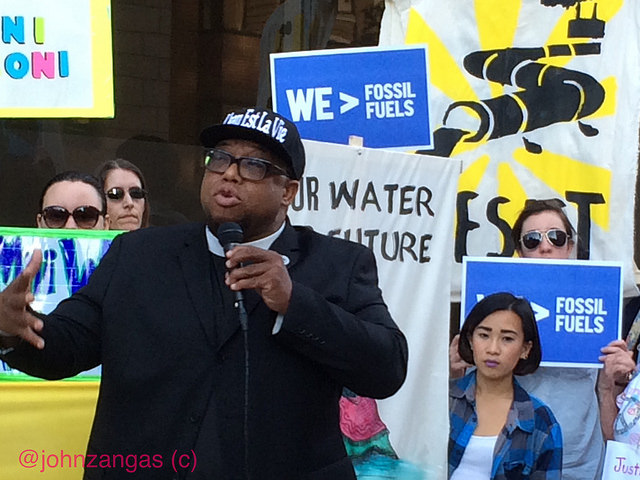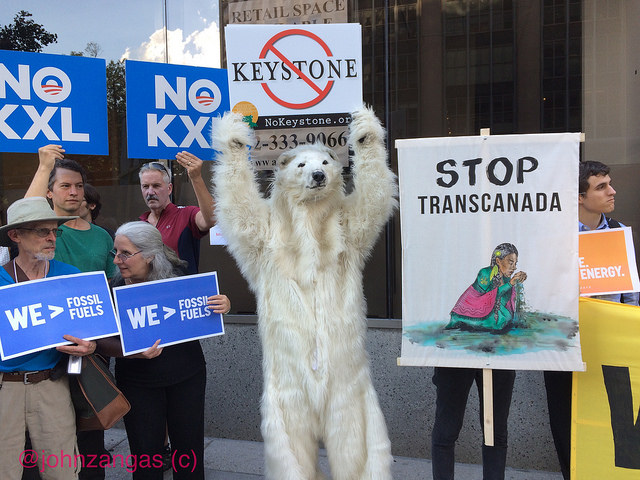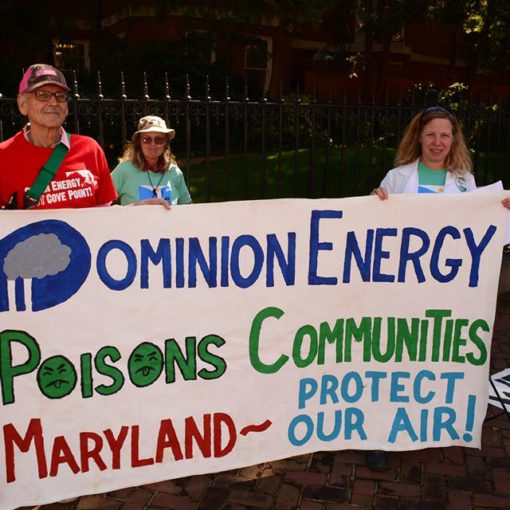
Washington, DC — More than a hundred protesters and “water protectors” held a rally at TransCanada’s corporate office on Tuesday followed by a Native American round dance in the middle of 13th St., stopping some late rush-hour traffic. Familiar Keystone XL pipeline signs and banners were deployed once again, some even going back to the Forward on Climate March in 2014.
Protests against the proposed northern leg of the Keystone XL pipeline continue to flare as Nebraska regulators hold hearings to determine whether they will permit the route through the state. After pipeline company TransCanada finally gained in April the federal approval it sought for nine years, focus has shifted from the nation’s capital back to the plains states. Yet environmental groups in Washington, DC are still waging battle against Keystone XL, even as they gear up for a fight against a TransCanada pipeline closer to home.
At Tuesday evening’s protest, it was apparent that those affected by pipelines and their allies view battles against oil and gas drilling and associated infrastructure projects as a collective struggle against energy companies and their stranglehold over the political process. Some people held signs reading “#noDAPL,” referring to Energy Transfer Partner’s Dakota Access Pipeline and the encampment at Standing Rock. Like the Standing Rock Sioux and Dakota Access, many tribes, their lands and water would be harmed by the Keystone XL pipeline. The protesters also brought the rallying cry from Standing Rock which now permeates the anti-pipeline and climate movement: “Mni wconi,” meaning “water is life.”
“We know that the era of fossil fuels will soon be over, because we must end it if we are to stop the climate chaos that is already enveloping our country and planet,” said Jorge Aguilar of Food & Water Watch.
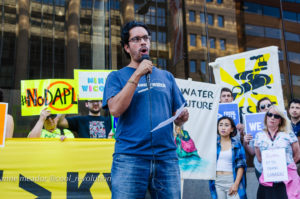
He recognized that Maryland activists had just achieved a ban against fracking in the state. “Guess who bumped up on the same river banks we’ve been trying to protect from fracking? TransCanada. The same corporation behind the incredibly controversial Keystone pipeline wants to build a pipeline with western Pennsylvania’s gas with West Virginia’s gas pipeline.”
TransCanada’s project in the works, the Eastern Panhandle Expansion—usually dubbed the Potomac Pipeline–would cross the Potomac River in western Maryland and transport fracked gas from Pennsylvania through a thin slice of Maryland to West Virginia. The pipeline’s crossing of the Potomac by horizontal direct drilling (HDD) is especially problematic because of the unstable geology of the region, the possibility of explosions and leaks, and the potential for unexpected flow-back of drilling fluid.
Seriously and repeated accidents from HDD have plagued the gas industry recently. In April, while Energy Transfer Partners spilled 2 million gallons of drilling fluid into wetlands in Ohio, with another estimated 2 to 3 millions gallons spilled underground. A court ordered that Sunoco, an ETP subsidiary, stop horizontal direct drilling because so many accidents had occurred, contaminating wells and water sources, and causing land slides.
Contamination of the Potomac River would harm not only water sources for municipal utilities along the river, it would affect the drinking water supply of 6 million people in the Washington Metropolitan region.
Jeremiah Lowery of the DC Chapter of Sierra Club complained that District residents are forced to petition the governor of Maryland, who could deny a water quality permit, to stop the Potomac Pipeline. “DC has no control over its water,” he said, one more reason in his view that the District needs statehood. He called for DC Council to divest from Wells Fargo, which financially backs pipelines like Keystone XL.
If the Potomac Pipeline goes through, it would connect with a distribution line proposed by Mountaineer Gas. The company enjoys support from state legislators even though it has taken landowners to court to seize their land to build the pipeline.
Tracy Cannon made the trip from Hedgesville, W.Va., to Washington to attend the protest.
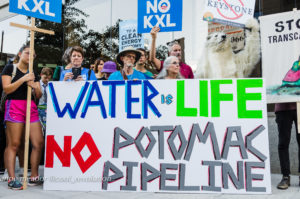
“This fight in West Virginia has brought together people on the left and right,” she said. “A lady named Patricia Kesecker has been holding out against the gas company all this time. We don’t trust this gas company because they took our friend’s land. Others are holding out to this day.”
Mountaineer Gas is using eminent domain to take people’s land. “In Patricia’s world, when you’ve worked the land for 50 years and put in your blood, sweat and tears, and some company can come and take that from you, that is heartbreaking,” Cannon continued. “Those are the kind of fights that cut to the quick.”
Following several speakers just below the windows of TransCanada’s office, ralliers flooded 13th St. to hold a round dance. Participants held hands and circled drummers to fill the entire street. Wells Fargo’s office is located directly on the other side of the street. At the end of the dance, they rushed to the center of the circle and chanted, “Whose streets? Our streets. Whose water? Our water. Whose land? Our land.”
The Nebraska Public Service Commission will continue holding hearings for the rest of the week to determine whether the Keystone XL pipeline serves the state’s public interest. The Commission controversially excluded testimony on the market viability of the pipeline, which is in doubt, and the increased risks of leaks and explosions if the pipeline operates at less than full capacity.

